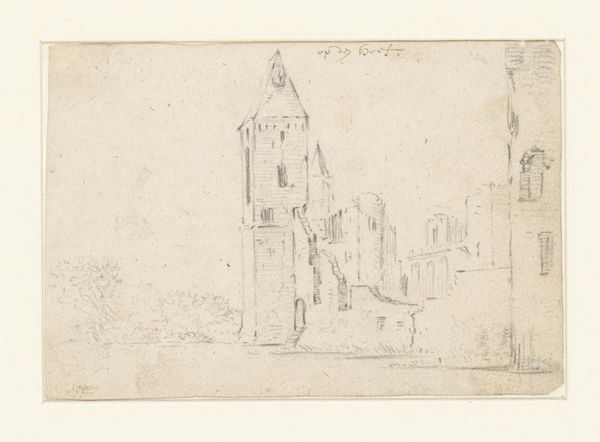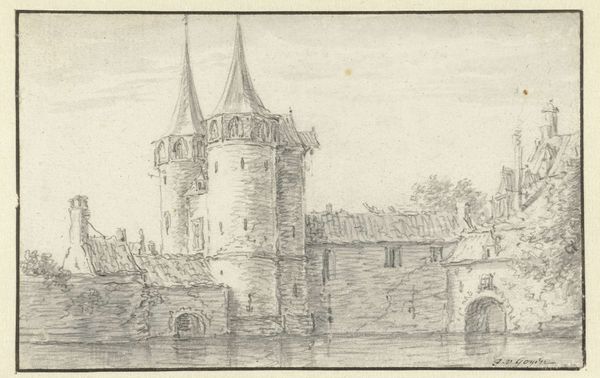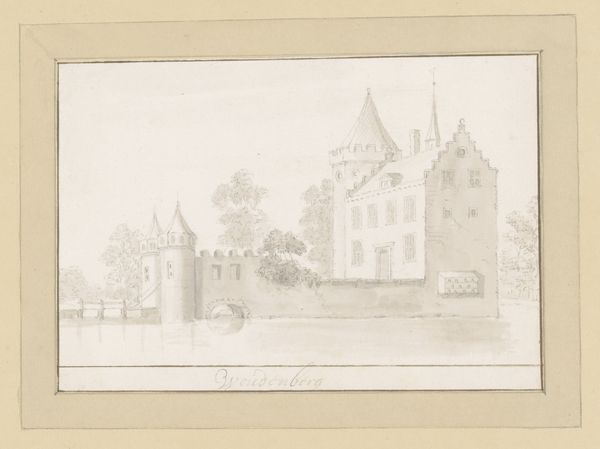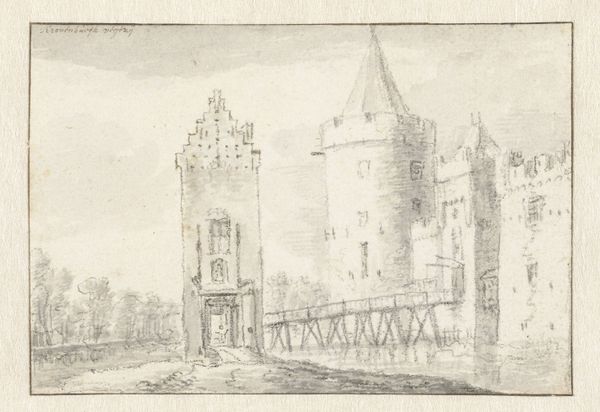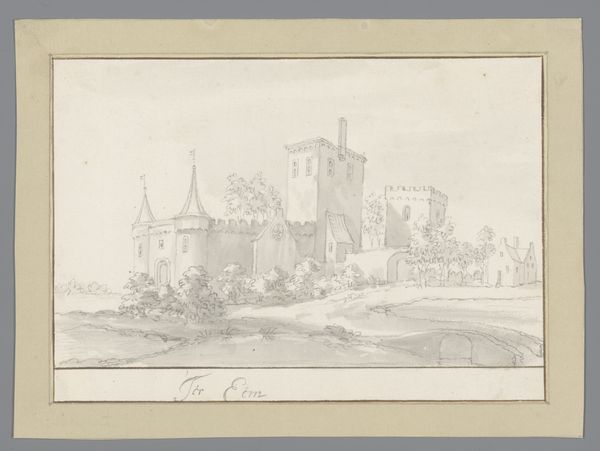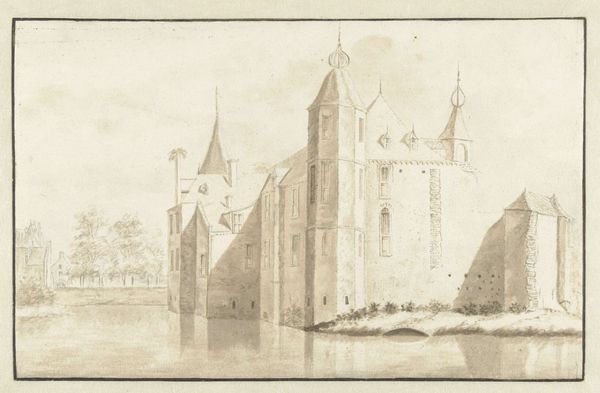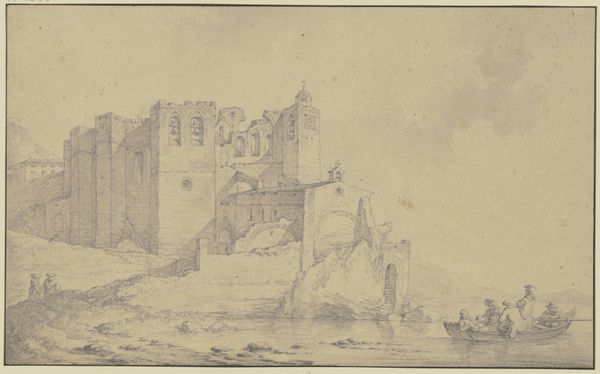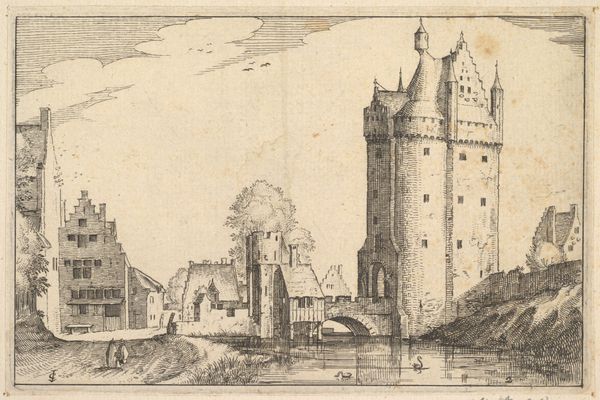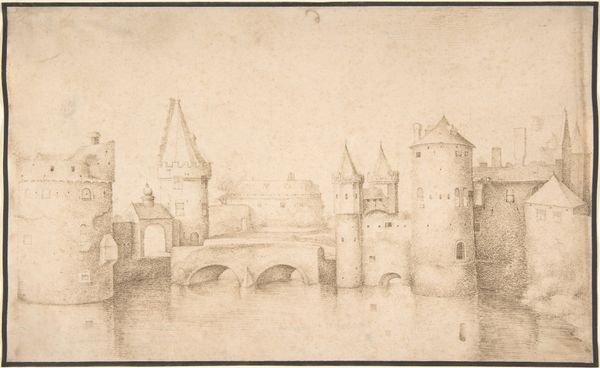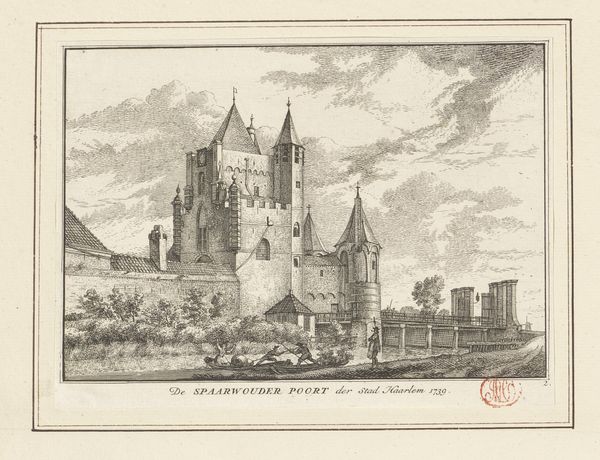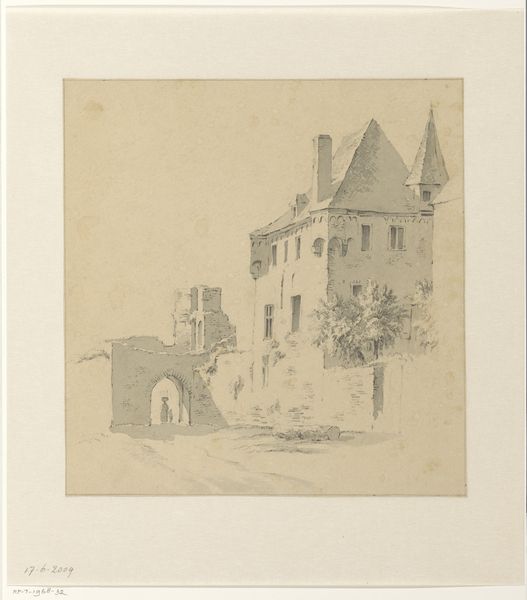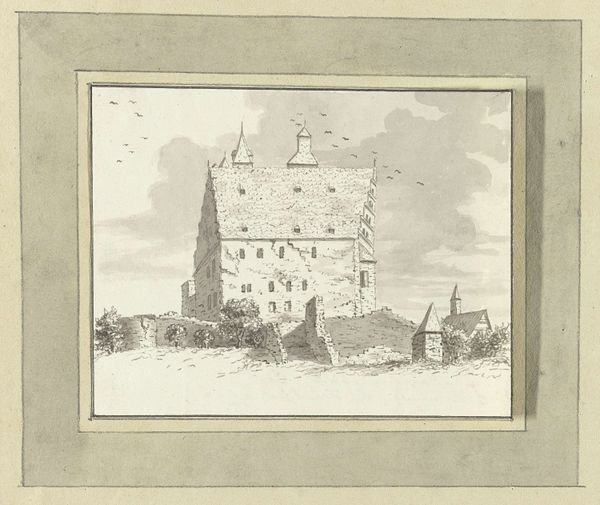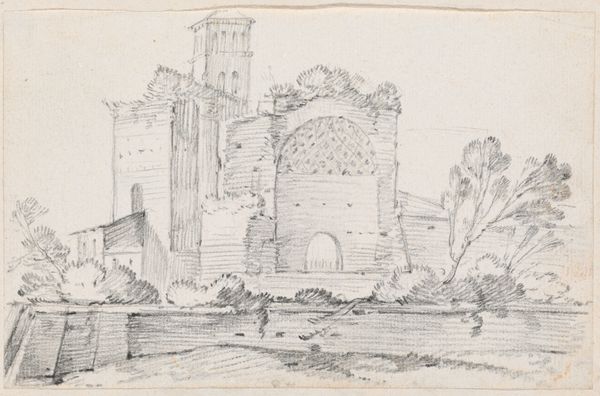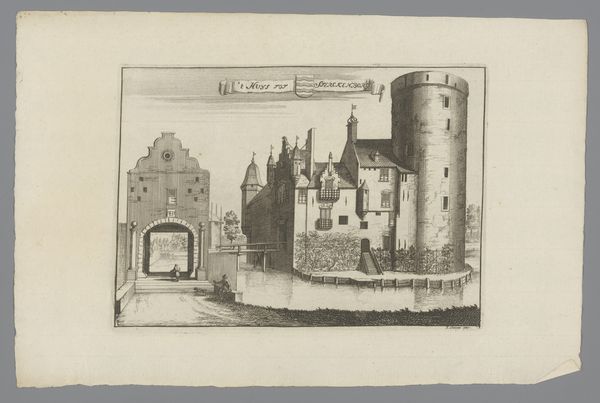
drawing, pencil
#
drawing
#
aged paper
#
toned paper
#
light pencil work
#
dutch-golden-age
#
old engraving style
#
sketch book
#
landscape
#
personal sketchbook
#
sketchwork
#
pencil
#
sketchbook drawing
#
cityscape
#
storyboard and sketchbook work
#
sketchbook art
Dimensions: height 178 mm, width 307 mm
Copyright: Rijks Museum: Open Domain
Curator: Welcome. We're looking at "Witte Vrouwenpoort te Utrecht," a pencil drawing created between 1619 and 1690 by Anthonie Waterloo. Editor: It feels quiet, almost melancholic. The light is so soft, the architecture emerging gently from the toned paper. Like a memory half-faded. Curator: Yes, the aged paper contributes to that feeling. The Witte Vrouwenpoort, or White Women’s Gate, was a real place. Waterloo often sketched landscapes, but these aren’t simple documents. The gate itself acts as a powerful threshold—between the known and unknown, the safe and unsafe. City gates always served this double function in their era, I'd add. Editor: Thresholds can also be points of control, can't they? Who passes through, who is kept out, and why? Consider Utrecht’s history – a city grappling with religious and political shifts during this period. This gate symbolizes not just access but also the regulation of bodies and ideas. Curator: Precisely. Gates symbolize order, they define limits. Also consider that cityscapes, even as mere drawings, are acts of claiming space, aren’t they? Think about what the rising merchant class signified, and who was still excluded from that social ascent in 17th century Netherlands. But what I keep thinking is, this isn't a monumental painting commissioned by the city council to prove the power and authority of the city. Waterloo's drawing offers us something more personal. Editor: Personal, yes, and perhaps deliberately ambivalent. There’s a dreamlike quality that invites us to question what we're seeing. Note the figures that can be hardly made out beyond the open doors in the central foreground; these everyday encounters offer the possibility of an experience of radical democracy on a smaller scale, outside official institutions. Is it utopia? I can’t say for certain. It hints at the messy, lived realities masked by those imposing facades. Curator: What's remarkable is how a seemingly straightforward cityscape can evoke these deeper reflections on societal power structures. The symbols have mutated for us over time. We can't read it as easily. Editor: Agreed. And understanding that transformation—how symbols evolve, how power shifts—is essential for a truly intersectional understanding of this artwork. Curator: It truly highlights the multilayered narratives that even a simple drawing can convey. Thanks for your contribution. Editor: My pleasure.
Comments
No comments
Be the first to comment and join the conversation on the ultimate creative platform.
